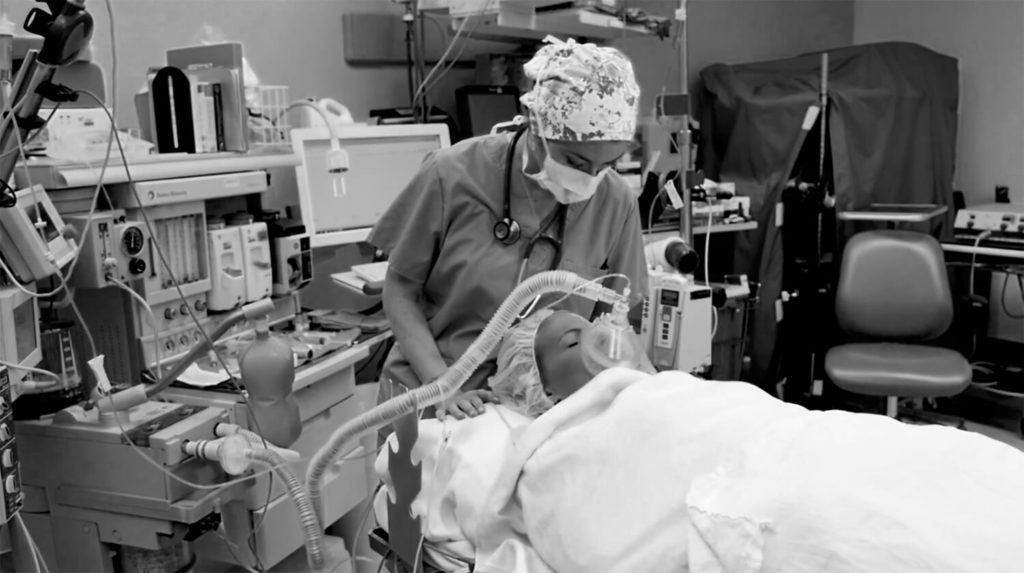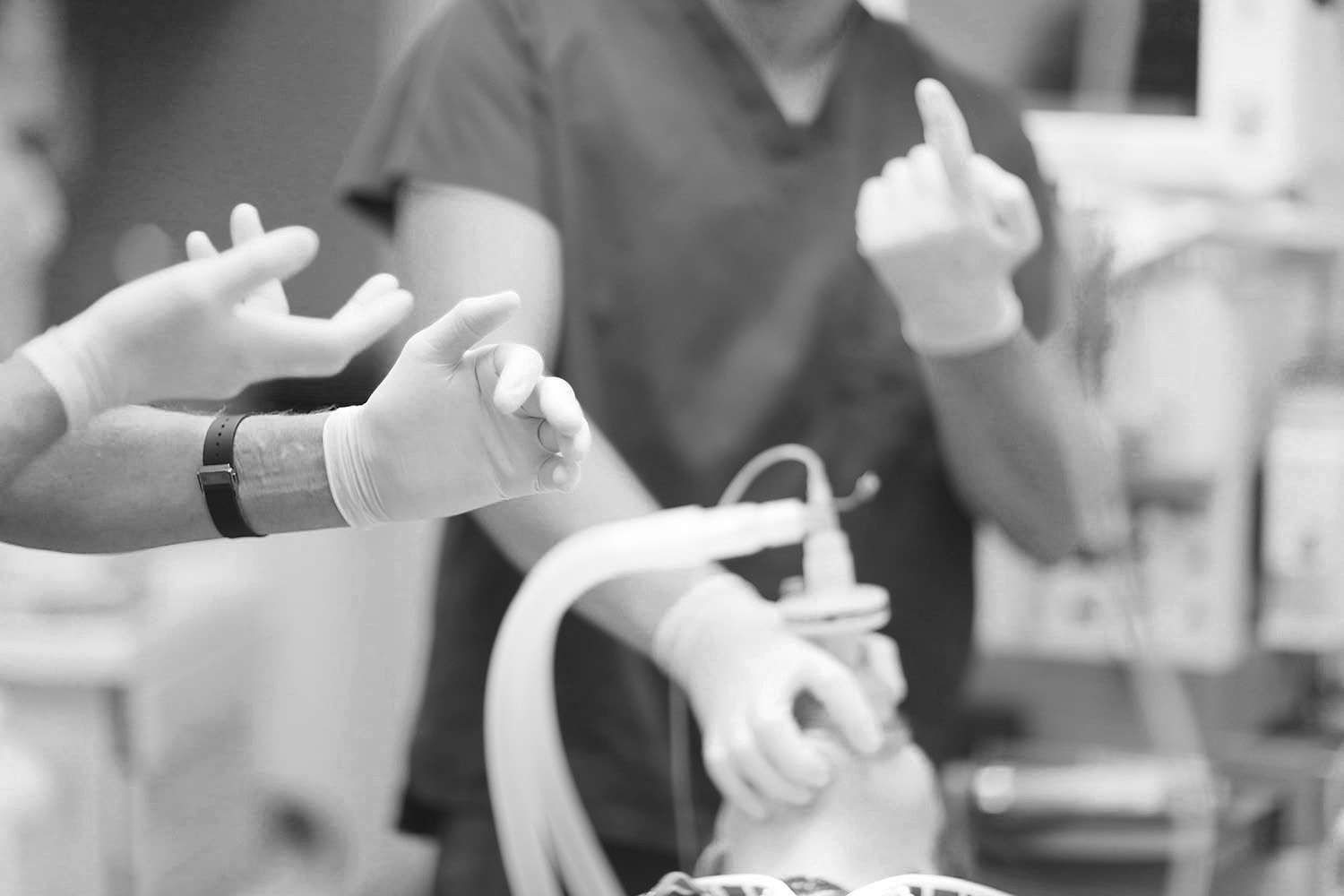Anesthesia is a safe and effective means of alleviating pain and discomfort during medical and surgical procedures. All anesthesia care is provided with the highest degree of professionalism and expertise. A CRNA (certified registered nurse anesthetist) is a highly qualified anesthesia professional. CRNAs provide constant monitoring of every important body functions: Heart rate and rhythm, blood pressure, body temperature, fluid balance, and oxygenation to control patients’ pain and level of unconsciousness to keep patients safe. As changes occur, according to your reaction to anesthesia, your CRNA responds with modifications to ensure your comfort and safety.

A CRNA or a physician anesthesiologist. CRNAs provide the highest quality and safe anesthesia services combined with a personal concern for the health and welfare of our patients. A Student Registered Nurse Anesthetist (SRNA) is a CRNA in training.
Your medical history is taken by your anesthesia provider and an anesthetic plan is developed according to your history and the procedure you are having performed. You are taken to the operating room where monitors are applied and you will be asked to take deep breaths of oxygen through a mask. Intravenous medications are given to put you completely asleep. A breathing tube or laryngeal mask device may be placed in your airway and connected to the anesthesia machine. You are then given breathing gases to keep you asleep for the procedure. You will be constantly monitored and your CRNA will respond with modifications to ensure your comfort and safety. Once your surgery is over, the medications and gases are turned off. Your breathing tube is removed when you are fully able to breathe on your own. You are then taken to the recovery room to be cared for by a recovery room nurse until you are ready to go to your hospital room or to go home.
During anesthesia, your vital signs such as heart rate, breathing rate, blood pressure, and oxygenation are constantly monitored to gauge the depth of anesthesia.

A controlled unconsciousness or deep sleep that removes pain throughout the entire body. You go to sleep and feel nothing. To begin, you are given medications through your IV. Once you are asleep, your CRNA may place an LMA or a breathing tube into your trachea (windpipe) to help you breathe and protect your lungs. You will be monitored constantly, and your CRNA will respond with modifications to ensure your comfort and safety. Once your surgery is complete, the amount of medications and gases are reduced. Your breathing tube is removed before you are completely awake, but after you are fully able to breathe on your own.
Numbs or removes pain from a specific region of the body such as an arm or leg.
Examples include:
Femoral nerve blocks – Used for surgeries on the leg. Medication is injected near the groin.
Interscalene blocks – used for surgery in the shoulder or upper arm. Medication is injected by your neck.
Axillary block – Used for surgery in the elbow, wrist, or hand. Medication is injected below the underarm.
These may be used in addition to general anesthesia and may provide pain management after surgery (up to 12 hours) and decrease the need for narcotics during surgery.
Numbs or removes pain from a small specific area of the body. Usually for minor procedures. You may stay awake and alert or you may be given medicine to help you relax.
These are types of regional anesthesia. These are very common options for labor and delivery. You are given numbing medications through a needle in or around your spine.
For an epidural, medication is injected just outside of the membrane that protects your spinal cord. A very small tube or catheter is often left in place so you can receive more medicine as needed. For a spinal, a smaller needle is used to inject medication into the fluid around your spinal cord. It starts to take effect quickly and no catheter is left in place.
A safe and effective option for patients undergoing minor surgery or diagnostic procedures. This method allows patients to recover quickly and resume normal activity in a short amount of time. It is an altered state of consciousness that minimizes pain and discomfort during minor surgeries such as a biopsy, minor fracture repair, colonoscopy, EGD, and dental surgery. You may receive sedative medications through an IV and possibly pain medication if needed. You will feel drowsy and may feel like you took a nap. You are not likely to remember the procedure. This is extremely safe when administered by a qualified anesthesia provider such as a CRNA. You will be constantly monitored throughout the procedure to make sure you are safe.
Friday: 1830-2100 – Stress Management for Health Providers – Matthew Zinder, MS, CH, CRNA
Saturday: 800-1530 – Click Here to Register and View the Complete Agenda!
The Missouri Association of Nurse Anesthetists (MoANA) has more than 1236 members. MoANA was founded in 1935 by 15 charter members, including Helen Lamb of St. Louis. She became the first president of MoANA and later served as president of the American Association of Nurse Anesthetists (AANA), our parent organization.